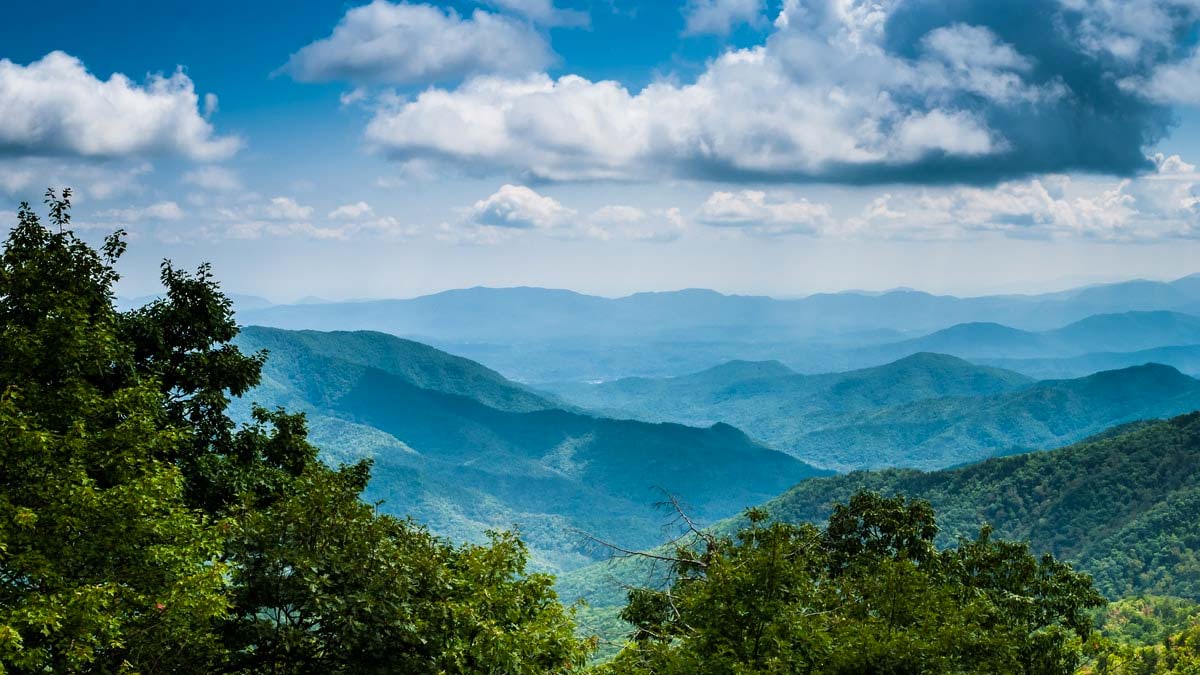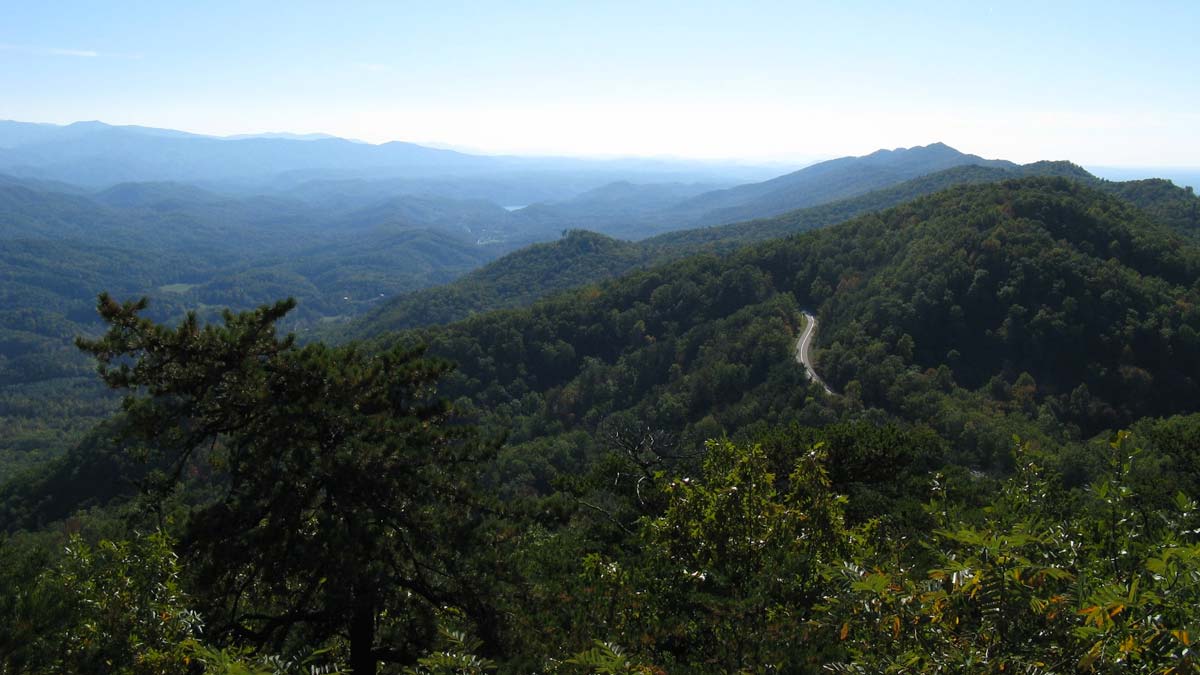Everything You Need to Know for Your Smoky Mountains National Park Trip
The Great Smoky Mountains National Park is the most visited national park in America. 500,000 acres of ancient mountain forests, valley fields, rivers, streams, and waterfalls straddle the border between Tennessee and North Carolina, beckoning nature enthusiasts of all kinds to explore its hidden treasures. Our guide to exploring the Smoky Mountains National Park will help you get the most out of your trip to one of the most stunning and interesting destinations in America.
Achieving the Impossible
The idea for the Great Smoky Mountains National Park began to percolate as early as the 1890s, largely as an effort to save the remaining forest lands from the highly productive lumber industry. But the idea didn’t gain much momentum until the 1920s with the help of motorists looking for beautiful places to drive their shiny, new cars.
President Calvin Coolidge signed a bill in May of 1926 to provide for establishing the park, but it would still take many years and much effort to acquire the initial 150,000 acres necessary through private fundraisers. The area had been homesteaded for generations, so many families were moved, farms were abandoned, and lumber projects were terminated. Finally, on September 2, 1940, Franklin D. Roosevelt dedicated the Great Smoky Mountains National Park "for the permanent enjoyment of the people.”
Getting There
If you’re flying in, you’ll want to look to the McGhee-Tyson Airport (TYS) just south of Knoxville, TN and about 45 miles west of the Gatlinburg entrance, or Asheville Regional Airport (AVL) just south of Asheville, NC and about 60 miles east of the Cherokee entrance to the park. Fortunately, Highway 441 bisects the park east to west, connecting Cherokee, NC to Gatlinburg, TN, effectively making the entire park accessible no matter which airport you fly into.
A third entrance is available near Townsend along Highway 321 on the Tennessee side of the mountains. It’s sort of the backdoor to the park, lacking a Visitor Center to welcome you, but it’s also the closest entrance to Cades Cove Loop, one of the most popular destinations in the park. And the Cades Cove Loop Visitor Center is waiting for you at the far end of the loop.
Welcome to the Great Smoky Mountains
Three main Visitor Centers welcome you to the Great Smoky Mountains National Park. Sugarlands Visitor Center will greet you at the Gatlinburg entrance on the Tennessee side of the park. You’ll find the Oconaluftee Visitor Center just inside the Cherokee entrance on the North Carolina side. And as mentioned, the Cades Cove Visitor Center can be found at the west end of the Cades Cove Loop.

Each visitor center can outfit you with maps, books, and limited supplies for your stay at the Smokies. Park Rangers are available to answer your questions and help you find that perfect trail or activity you’re looking for.
The Clingmans Dome Visitor Contact Center is located at the top of the Clingmans Dome Road, accessed via Highway 441 at the Newfound Gap on the Tennessee and North Carolina border. This center offers fewer amenities than the larger ones down below, but it sits just a half mile below the Clingmans Dome Observation Tower, the highest point in the park.
You’ll be happy to know that the park is open 24 hours a day, 365 days a year, and there is no entrance fee. That’s right. It costs $0 to enter the Smoky Mountains National Park.
Where to Stay When You’re Staying a While
If you’re seeking a wilderness experience during your visit to the Smokies, you will find numerous backcountry campsites dispersed throughout the park, as well as some shelters along the famous Appalachian Trail. You’ll have to put in the miles to reach these backcountry campsites, but the park offers a downloadable trail map to help you find them. Be sure to pick up a backcountry permit before you go.
The park maintains ten frontcountry campgrounds that you can drive right up to with plenty of sites for everyone. These campgrounds are equipped with restrooms, cold running water, and flush toilets. Frontcountry campsites cost $17.50 per night and are set up with a table and fire grate. Visit the National Park Service (NPS) website for information and maps for each campground, including which ones support RVs.
Seven group campsites are available to reserve, as well as five horse camps accessible by vehicle with hitch racks and primitive camping facilities.
Wherever you choose to camp, be sure to bring in only USDA-approved, heat-treated wood to prevent introducing invasive bugs to the park. You can read up on all Campground Rules and Regulations on the NPS site so you are fully prepared for your stay.
The only lodge in the park is LeConte Lodge, located on top of Mount LeConte, the third highest peak in the park at 6,593 feet. And yes, you have to hike to get there. Seven rustic, one-room cabins and three multi-room lodges can accommodate up to sixty guests. Check the LeConte Lodge website for rates and availability.
So Much to See and Do
Once you’re settled in, it’s time to explore the Smokies. The Great Smoky Mountains Association sells a Smokies Starter Kit for $5, which includes maps and trail guides for all your Smoky Mountain activities.
Ride, Drive, or Walk – It’s All Splendid
One of the driving factors for the creation of the Smoky Mountains National Park was motor tourists looking for somewhere new to go in their fancy cars. It isn’t much different today with 384 miles of vehicle-accessible road within the park. The 11-mile Cades Cove Loop is by far the most popular destination, but you’ll also enjoy visiting Newfound Gap, Cataloochee Valley, and the Roaring Fork Motor Nature Trail. Several picnic sites with a table and raised grill are set up along popular routes where you can stop and enjoy the scenery while taking lunch.

There are no mountain bike trails in the park, but most roads are bike-friendly. Bikes can also be taken on the Gatlinburg Trail, the Oconaluftee River Trail, and the lower Deep Creek Trail.
But the best way to explore the Smokies is the same way it’s been done for thousands of years: on foot. Grab a trail map, find your favorite waterfall or mountaintop view, and lace up your hiking boots!
Day Hike the Appalachian Trail
It takes an average of seven days to complete the 71.2-mile stretch of the Appalachian Trail (AT) that runs the length of the park (note that hiking the AT requires a special permit). Don’t have that much time? You can still experience the best that the AT has to offer within the Smokies on a day hike to Clingmans Dome and Silers Bald.
Standing at 6,612 feet, Clingmans Dome Observation Tower is the highest point in the park as well as on the entire AT. Accessible via a half-mile walk up a paved path from the parking area, Clingmans Dome is also the most visited location within the park. Catch a sunset here and you’ll understand why.
From the Dome, you can head south along the AT for about 4 miles to reach Silers Bald, a mountain-top meadow of grasses, wildflowers, and wide open views of the park. Once you’re done soaking in the splendor, retrace your steps to the Clingmans Dome parking lot to complete your 9-mile day hike. Other popular AT day hikes include an 11-mile round-trip trek up to a restored fire tower atop Mt. Cammerer and the 7.8-mile round-trip hike up to Charlies Bunion for vertigo-inducing, panoramic views of the Smokies.Take the Hike the Smokies! Challenge to earn reward pins for all the miles you put in while hiking the Smokies.
Adventurous Fun for the Whole Family
You can fish for wild trout in all 2,900 miles of streams within the park provided you have a valid Tennessee or North Carolina fishing license. But note that you’ll have to acquire your permits and licenses before entering the park.
The kids will love hiking to the gorgeous waterfalls throughout the park on kid-friendly trails. Guided horseback tours are a great way to explore some of the 550 miles of horse trails within the park, and the whole family will enjoy a carriage ride or hayride around Cades Cove Loop or other park trails. Check with the various park stables for routes and pricing.

The history of the Great Smokies is just as rooted in its soil as the trees. The family may enjoy visiting the historic buildings and burial landscapes that tell the stories of time amid the splendid forests. Be sure to check into the Ranger-led Programs to take advantage of the Junior Rangers & Not-so-Junior Rangers programs as well as special events throughout the year.
Whatever is calling you to visit the Great Smoky Mountains National Park, whether it’s the scenic drives, wildlife, waterfalls, or seemingly endless hiking trails, you will not regret answering the call. It’s the perfect place to lose yourself to the mountains and endless views, and perhaps the perfect place to find yourself too.

